Rib fracture
 Rib fractures are one of the most common chest injuries and account for 5 to 15% of all skeletal bone injuries. Treatment of patients with rib fractures is a complex and urgent problem in modern traumatology and surgery, as this injury can lead to a number of serious complications from the vital systems of the body — respiratory and cardiovascular. In The European Clinic of Sports Traumatology and Orthopaedics (ECSTO) provides round-the-clock diagnosis and treatment of rib fractures, as well as other injuries to the musculoskeletal system. The most comfortable conditions have been created for patients, and a team of qualified specialists with experience in leading European clinics is doing everything possible to achieve the most effective result.
Rib fractures are one of the most common chest injuries and account for 5 to 15% of all skeletal bone injuries. Treatment of patients with rib fractures is a complex and urgent problem in modern traumatology and surgery, as this injury can lead to a number of serious complications from the vital systems of the body — respiratory and cardiovascular. In The European Clinic of Sports Traumatology and Orthopaedics (ECSTO) provides round-the-clock diagnosis and treatment of rib fractures, as well as other injuries to the musculoskeletal system. The most comfortable conditions have been created for patients, and a team of qualified specialists with experience in leading European clinics is doing everything possible to achieve the most effective result.
The structure of the chest and ribs
The thorax is an important anatomical formation and has many functions. It protects the internal organs from injury and external influences. The ribs, due to their skeletal function, contribute to the fixation of the chest organs in the correct anatomical position, due to this, the heart does not move to the sides, and the lungs do not collapse. The ribs are also attachment points for many muscles, particularly the respiratory muscles, the largest of which is the diaphragm. The sternum is the place where the red bone marrow is located.
A person has 12 pairs of ribs. 10 pairs close together, forming a tight ring for the chest organs. The first 7 pairs are attached directly to the sternum, and the remaining three are attached to the cartilaginous part of the overlying rib. The last three pairs do not attach to anything, but end freely in the thickness of the muscles. Based on the anatomical position, the ribs have their name: the first seven pairs are true, the next three pairs are false, and the last ones are oscillating.
Causes of fractures
- Direct injury (impact) of the chest (bruising of the chest against a protruding object when falling in everyday life);
- Sharp compression of the chest with great force.
Types of fractures
A rib fracture can be closed or open (extremely rare). As a result of direct injury (impact) or compression, bruises, abrasions and bruises may also occur. Open rib fractures also occur as a result of impact, gunshot wounds, etc. Fractures often run along the amniotic, middle axillary, or near-thoracic line. The V-XI ribs break most often.
By quantity:
-
isolated (fracture of one rib);
-
multiple (fractured multiple ribs);
-
floating (in which a fragment of ribs is formed that is not connected to the spine).
On the side of defeat:
-
one-sided;
-
double-sided.
With a fracture of one rib, dislocation of fragments most often does not occur, and with a fracture of several ribs, fragments can shift in different directions and injure surrounding tissues and organs, which can lead to dangerous complications later.
In addition, uncomplicated rib fractures are distinguished from complicated ones (with subcutaneous emphysema, hemothorax, pneumothorax, hemoptysis, or pulmonary hemorrhage).
The main complications:
-
subcutaneous emphysema (accumulation of air in the subcutaneous tissue of the chest wall, may spread to other areas of the body);
-
hemothorax (accumulation of blood in the chest cavity — is a consequence of bleeding from the vessels of the lungs, intra-thoracic branches of large vessels);
-
pneumothorax (accumulation of air or gases in the chest cavity);
-
pulmonary hemorrhage;
-
infectious complications (possible development of post-traumatic pneumonia due to congestion as a result of shallow and rapid breathing).
The main symptoms of a rib fracture
-
Acute, severe chest pain
-
Shallow breathing (interrupting attempts to take a deep breath due to pain)
-
Increased pain during deep breathing, coughing, and torso movements
-
Crepitation of fragments (crunching, clicks in the fracture area)
-
Chest lagging when breathing on the affected side
-
Swelling of soft tissues at the fracture site
If you have one or more of these symptoms, you should immediately consult a doctor to identify the severity of the injury and provide timely and qualified medical care.
Treatment of rib fracture
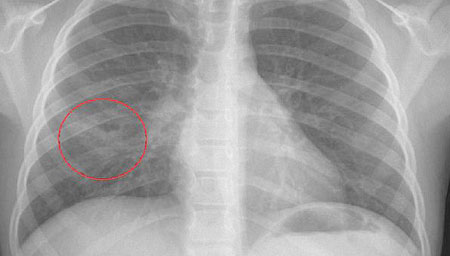 Rib fracture diagnosis is usually set to based on clinical data (anamnesis, complaints, objective data) and the results of instrumental studies. The main types of studies used for accurate diagnosis are:
Rib fracture diagnosis is usually set to based on clinical data (anamnesis, complaints, objective data) and the results of instrumental studies. The main types of studies used for accurate diagnosis are:
-
chest X-ray;
-
computed tomography;
-
to exclude complications, ultrasound of the pleural cavities, pulse oximetry, and clinical blood and urine tests are performed.
The choice of treatment tactics depends on the type and severity of the injury, the symptoms of rib fracture, and the general condition of the patient. Thus, for isolated and uncomplicated rib fractures, anesthesia is performed without applying a bandage, because it restricts the respiratory process and negatively affects recovery and can lead to the development of pneumonia. For multiple and complicated fractures, conduction anesthesia is performed (inpatient treatment is recommended). In this case, it is important to exclude compression of the lungs with blood or air, a chest X-ray (or computed tomography) is performed and, if necessary, a puncture (drainage) is performed to remove air or blood. In particularly severe cases, artificial ventilation is used.
The healing time of rib fractures
The rib fracture heals over about 3 weeks. But these terms are quite conditional, since bone fusion depends on many conditions. The fusion of a rib fracture occurs by the formation of a callus in three stages: connective tissue callus, osteoid callus, and bone callus.
Connective tissue callus — a blood accumulation (hematoma) forms at the site of the fracture, into which fibroblasts (cells that produce connective tissue) migrate.
Osteoid callus — then the connective tissue transforms into osteoid tissue due to calcification (deposits of inorganic compounds that form the basis of normal bone). Previously, osteoid callus was mistakenly called "cartilaginous".
Callus — enriched with minerals, osteoid tissue turns into bone. At first, the callus is loose, larger than the diameter of a broken bone. Then the initial callus decreases in size and acquires a normal architecture (the phase of reverse development of the callus).
The process of rebuilding the bone structure can take about a year. The fracture line disappears between the 4th and 8th months.
How to act in case of rib fracture
First of all, it is necessary to relieve acute pain with the help of painkillers, then the victim should be moved to a semi-sitting position and provide fresh air, as the patient has difficulty breathing. After providing first aid, it is necessary to immediately take the patient to the nearest clinic, while during transportation the victim should, if possible, be in a semi-sitting position.
If you don't know what to do with a fractured rib, call an ambulance team and don't take any independent action, as this can only make the situation worse.
Sleeping with a broken rib can be a problem and cause a lot of inconvenience. But for the entire healing period, you should adjust to sleep strictly as the doctor indicated: if the bones of the front of the chest are broken, you should be on your back; if the bones on the back are broken, you should sleep on your side, which is further away from the injury site.
By contacting ECSTO Clinic, you can be sure that you will be consulted by an experienced doctor, engaged in the treatment of this pathology. In addition, you will be able to take a rehabilitation course in one of the most modern rehabilitation departments in Russia.
Why the EMC
The first and only clinic in Russia, created in the image of the world's leading clinics
EMC is a multidisciplinary center offering patients a high level of medical services and a personalized approach
Worldwide recognition and awards
 Learn more
Learn more
Worldwide recognition and awards
 Certificates and licenses
Certificates and licenses
Make an appointment for a consultation
Specify your contacts and we will contact you to clarify the details
Reviews
and new products of the EMC
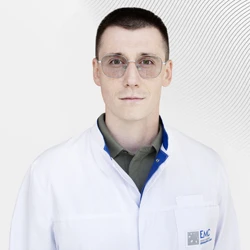
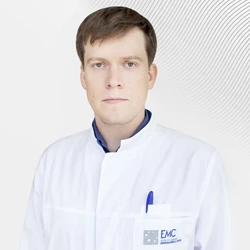

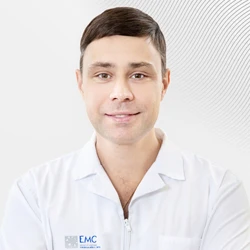
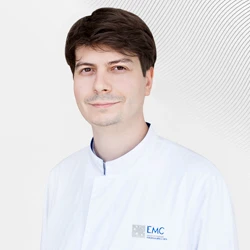

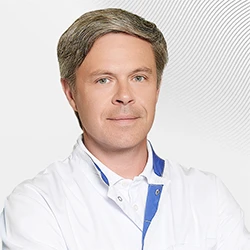
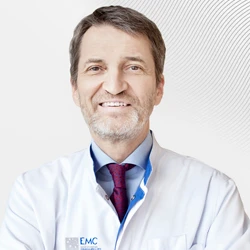

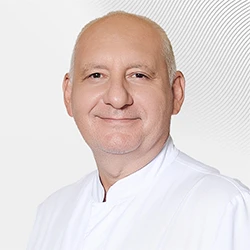
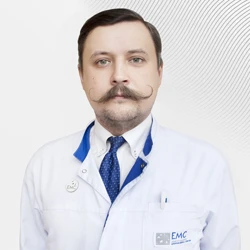

.webp)
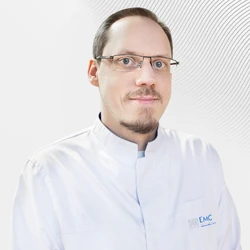
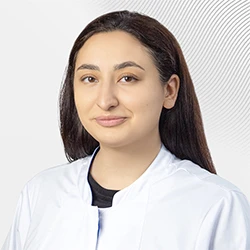
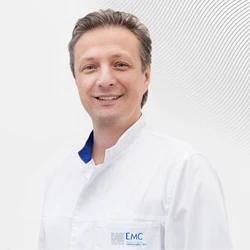
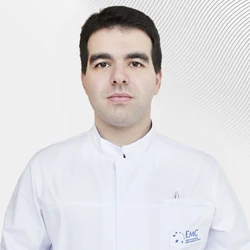
.webp)


